10 Free Resources for Online Learning During School Closures
Affiliate Disclaimer
This post may include affiliate links, meaning we earn a commission when you purchase a course or subscribe to a service using our links. However, all opinions are the author's.
All around the world, schools are facing closures due to COVID-19. Here are 10 free online learning resources to help you and your family resume learning during this time.
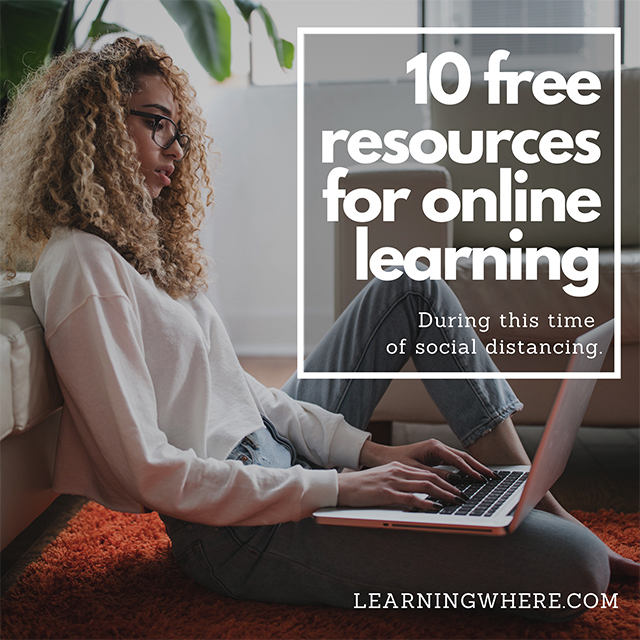
As somebody who grew up doing online school, I draw on my own experiences a lot, when writing for LearningWhere. I learned to become resourceful, especially in my senior year of high school. At the time, the online curriculum I was familiar with shut down. My family and I found ourselves scrambling for new resources, in order for me to complete high school successfully.
Luckily, we’re in 2020 today. And, due to school closures around the world, many organizations are offering free resources and help to those affected.
What are the top 10 free online learning resources?
1. Khan Academy
Khan Academy alone probably has the majority of the content you’ll need for studying at home.
They offer video lessons on:
- Pre-algebra
- Algebra
- Trigonometry
- Precalculus
- Chemistry
- Biology
- Physics
- World history
- U.S. history
- Art history
- And more!
Even though Khan Academy isn’t an accredited school, it’s a repository of high-quality educational content, and it allows plenty of flexibility for at-home learners.
Students can browse through any content they find interesting, or they can follow more detailed study plans.
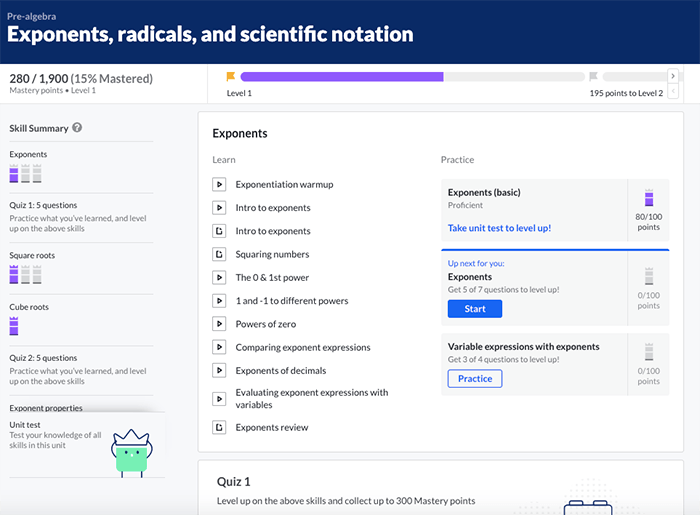
There are separate accounts for teachers and for students, so teachers have the ability to schedule daily assignments for each student.
A pre-made schedule for at-home learning.
Keeping in mind Coronavirus, Khan Academy recently released sample schedules for families to use.
There are separate schedules for Kindergarten-2nd grade, 3rd-5th grade, 6th-9th grade, and 10th-12th grade. The schedules list not just times to study different subjects, but times to take walks and to rest.
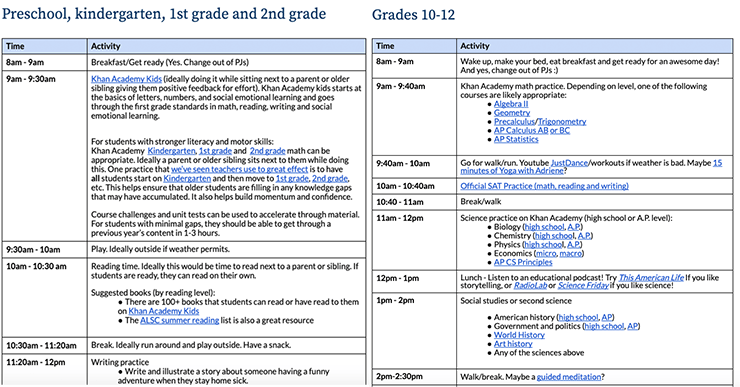
You can access the schedule here (Google Doc).
This presents a perfect starting point for families to craft their own schedule. Anyone studying from home can feel free to adapt it to their own needs.
2. Free Online Textbooks
Here we present you two main options:
- OpenStax.org (free textbooks, many subjects)
- American Yawp (collaborative U.S. history textbook)
OpenStax is a website full of “Peer-reviewed. Openly licensed. 100% free” textbooks on a variety of subjects.
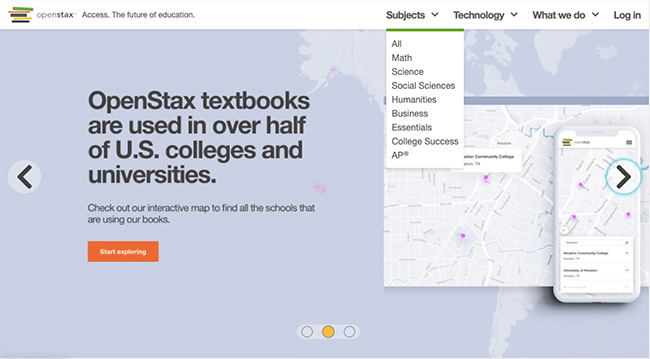
Many universities assign OpenStax textbooks (that’s how I found out about it), but you don’t need to be a college student to access them.
All you need is: internet connection. From there, you can either read the textbooks online, or download them in pdf, or even view them from their app.
In my specific case, my professor assigned the College Algebra textbook for us to use as a reference, and to solve the practice problems.
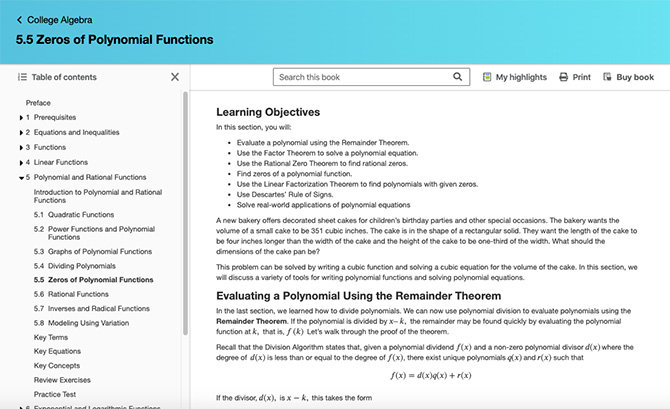
But apart from algebra, you can find textbooks on:
- Anatomy and Physiology
- Astronomy
- Biology
- Physics
- Statistics
- Sociology
- U.S. Government
- U.S. History
And speaking of U.S. history…
Another free textbook I found out about through college is a U.S. history textbook. “American Yawp” is a collaborative textbook with contributors from universities from all over the US, and outside of. You can browse through their “Contributors” page to see the full list.
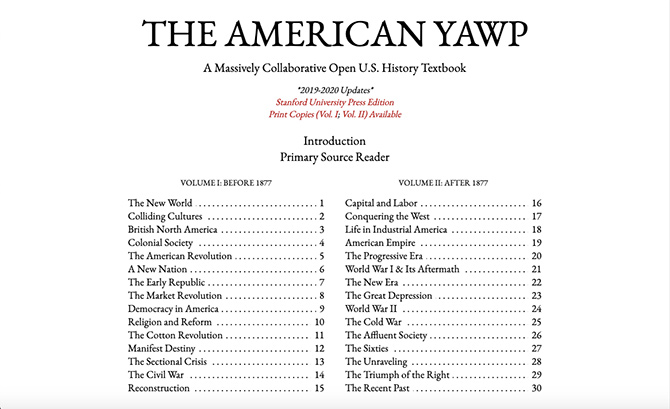
3. Coursera
If you’re a regular LearningWhere reader, you’re probably familiar with Coursera.

Coursera is an online platform that offers free online classes, produced by a variety of universities and renowned institutions. Participating institutions include Stanford, Duke University, University of Pennsylvania, Johns Hopkins University, IBM, Google, as well as many international universities.
Most courses are made up of a combination of video lectures, readings, and quizzes. Depending on the course, some might also include writing assignments or discussion boards.
The overall model for their courses is similar to that of an online college class, but with more flexibility. There’s a clear study plan to follow, but you’re able to work at your own pace, at any time.
There are courses on everything from social studies, to history, to programming, to education, and so much more.
There are courses about modern art.
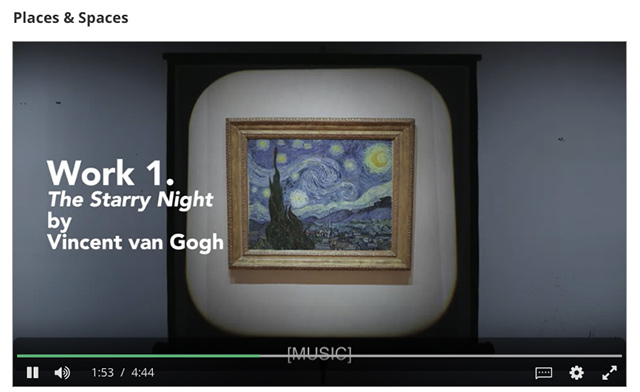
There are courses about the basics of programming.
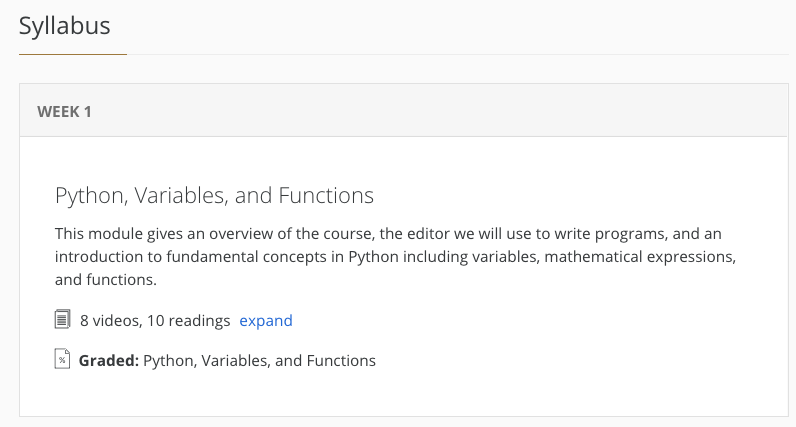
And recently, there’s also a course about Coronavirus.

Browse through our Coursera category here, and find more of our recommendations for some of their best courses.
4. EdX

EdX is very similar to Coursera. It also partners with top universities, and well-known institutions, to offer free online classes.
Some of the major differences between them would be the following:
The universities/institutions they each partner with are different. While Coursera partners with Stanford, for example, EdX has Harvard.
EdX is more career-oriented than Coursera. They offer more courses on topics like business management, than for example, history.
You can check more comparisons between them here, in our comprehensive post about online course platforms (paid or free).
5. CrashCourse on YouTube
CrashCourse gets some bad reputation. Many viewers find the hosts to be annoying, or they feel that the videos try too hard to be entertaining. Some feel that there isn’t enough substance in some of the videos. These are observations that I myself have made, too. And I’m sure there are more.
Nonetheless, CrashCourse videos do a good job at explaining simple concepts. They are probably not ideal as a main resource, but they serve as good assistance for harder subjects.
What’s more, they cover a huge variety of subjects. And because it’s on YouTube, it makes watching more convenient for students.

Topics include:
- Computer Science
- Biology
- World History
- U.S. Government and Politics
- Astronomy
- Economics
- Statistics
- Literature
And more!
As of March 2020, they count with over 10.5 million subscribers, and over 30 playlists of different subjects.
6. Public Libraries’ Online Resources
During the pandemic, many local libraries are also closing their doors. However, you might want to check their websites.
Many libraries offer not just digital ebooks, but audiobooks as well. Depending on your library, you might be able to check them out, just like you would with any other book. Sometimes you’ll need to install an app, but some might allow direct access through their website. Check with yours, and ask for direct support if you need it.
7. Scholastic “Learn At Home” Resources
In light of the Coronavirus epidemic, Scholastic is offering free educational resources for parents and children at home.
They had already published educational articles before, but this time they’re organizing them by grade level, and by daily modules.
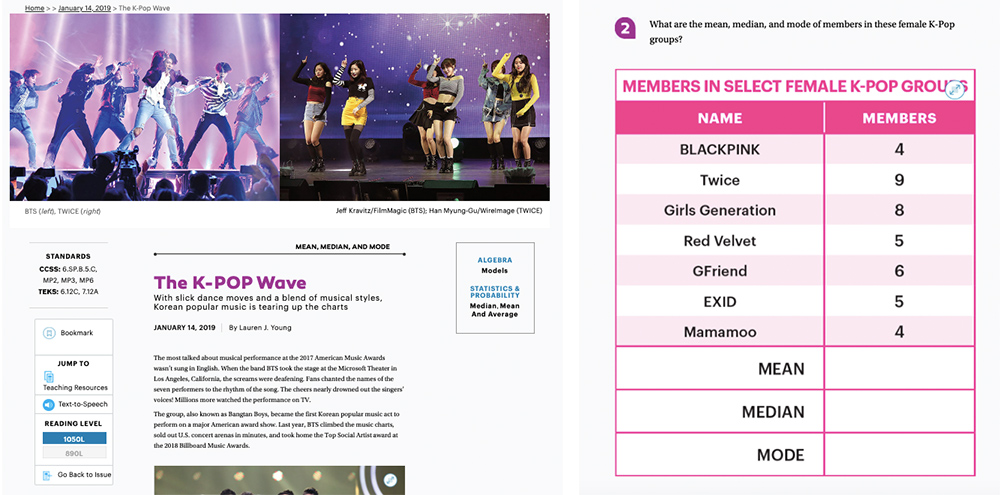
Above is an example of one of their articles, where they teach the mean/median/mode using sizes of K-Pop groups (you can find this under their “Grade 6+” category).
By the end of 15 days since they launched this “Scholastic Learn At Home” initiative, they will have put together 15 days’ worth of assignments. It is worth noting, however, that although they offer resources up until high school, the category is quite broad, stretching from 6th grade to 12th grade. So there might be a large gap there. Maybe the other sources in this post can be a better fit for older students.
8. For physical education: FitnessBlender
Even after possibly resuming classes online, a lot of children will be missing out on the mandatory physical activity that is P.E. class. What’s more, many city parks have been closing in high-risk cities.
But still, exercise is crucial in maintaining a healthy immune system, especially during this time.
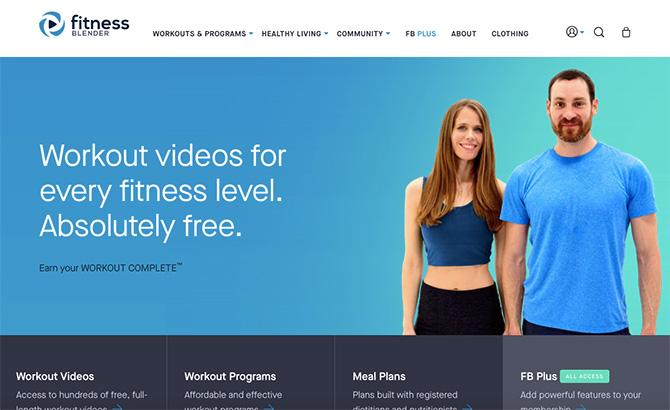
FitnessBlender offers 500+ full-length workout videos on their YouTube channel, and website. You can go on their website and filter videos by level of difficulty, type of workout, and length of video.
Types of workouts include:
- Yoga
- Cardio
- Strength training
- Toning
- Warm up/cool down
- Specific workouts (workouts for better posture, for calf strength, etc)
Even if you have limited space in your apartment or house, you might be able to do many of these.
In fact, they have specific videos which they call “apartment” workouts. These require less space, but they’re also “quiet”, in case you live in a second or third floor.
In addition to their free workout videos, they’re currently offering 70% off some of their paid programs right now, due to the situation. Some start at $4.99, so check them out if you’re interested.
The following resources aren’t always free, but they might already be at your disposition, if someone in your household is enrolled in college.
If you or anyone in your household is enrolled in college, you might have access to the following resources.
9. Online College Classes
If you have a college student at home, chances are their college classes are now all online. If the college student is staying at home at the same time as their younger siblings, or if you are the college student, this works out perfectly.
Depending on the classes this college student is taking, they might be able to invite their siblings (or depending, their children!) to watch. Particularly if it’s an entry-level course or core requirement course, high school students might not have too much trouble understanding.
Most college classes are made up not just of lectures, but readings and practice quizzes. College students can share these resources with their family members, and use them to enhance learning.
10. Kanopy (free documentaries)
Kanopy offers a variety of indie movies, as well as documentaries.
One click on their “documentaries” category shows over 6.5k available videos (as of March 2020).
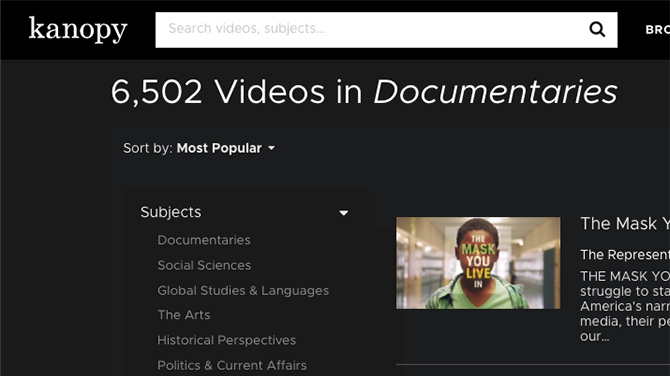
Many universities offer free access to students. Alternatively, you might have access to it through your public library.
Bonus: TED Talks and YouTube
When it comes to school curriculums, TED talks might not be the first thing to come to mind.
However, certain TED talks offer a chance to open up conversations. A possible idea for an assignment could be to browse through some popular TED talks, watch one, and write a brief reflection about it. For more serious topics, a research paper inspired by the TED talk could be a good fit.
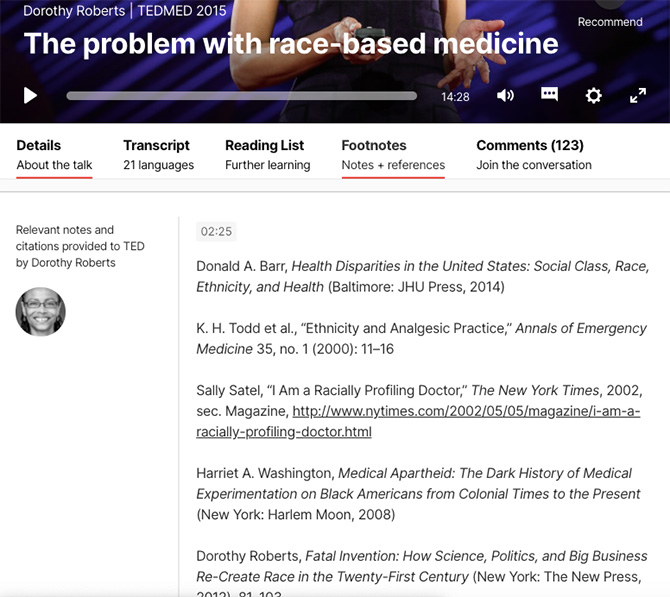
Some talks include “Further Reading” and “Footnotes” sections on the website, where you can delve deeper into whatever topic was being discussed.
You can also use any YouTube video of any speech, conference, or even news segment, and follow the same process. At the end of the week, watch one of the videos and use it as the main reference for a paper. Or, watch one of the videos as a family, and discuss. This is similar to the approach many professors and teachers take in classroom settings, to encourage dialogue.
So there you have it! What free online learning resources are you considering during this time? Did we miss any? Let us know what you think!
And make sure to stay updated with LearningWhere, on all the free and/or online learning resources.
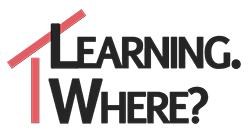
2 thoughts on “10 Free Resources for Online Learning During School Closures”